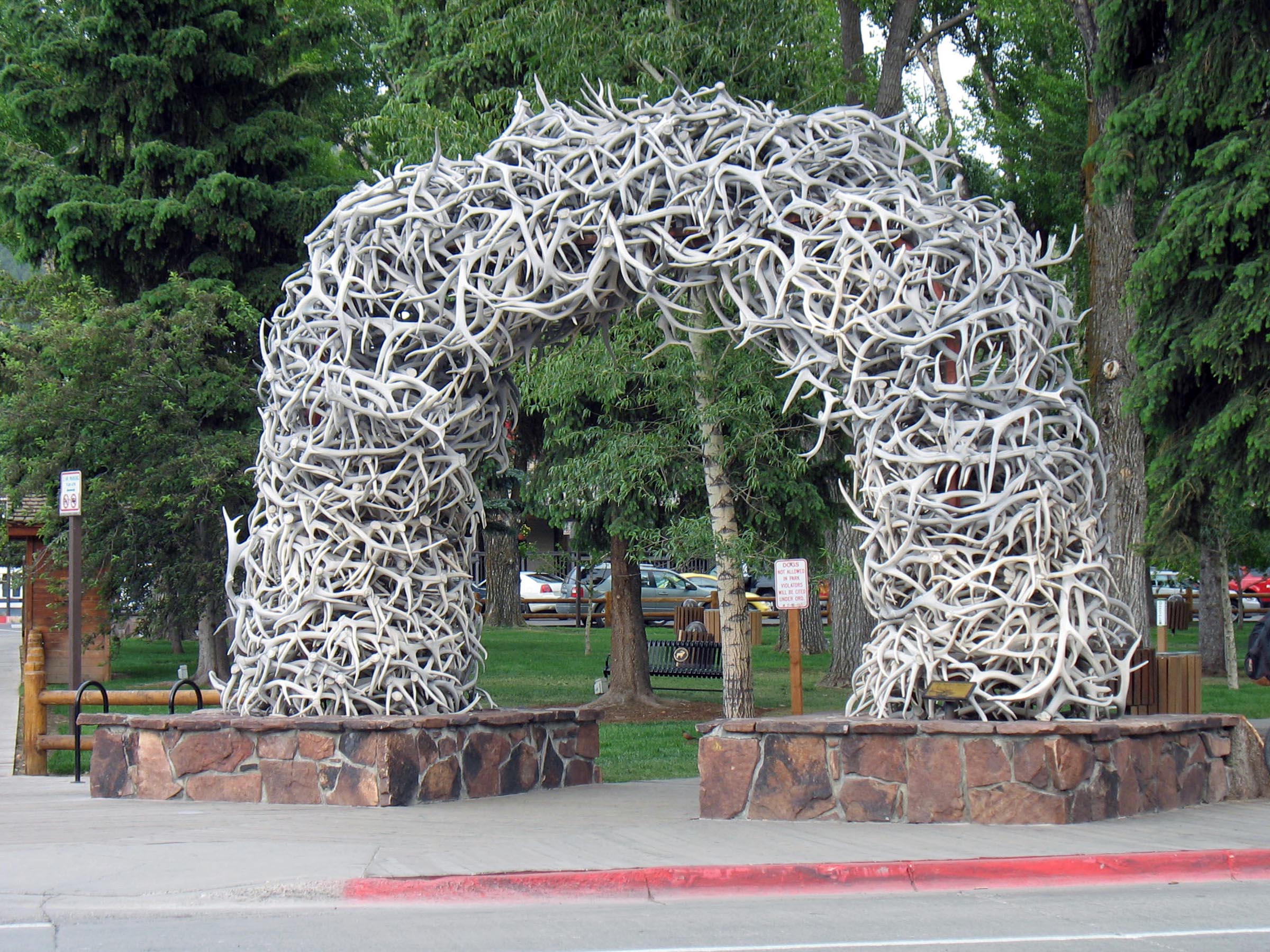CWD Found In Jackson Hole Elk: Understanding The Risks

Table of Contents
What is Chronic Wasting Disease (CWD)?
Chronic Wasting Disease (CWD) is a fatal, transmissible spongiform encephalopathy (TSE) affecting cervid species. It's caused by misfolded prion proteins, infectious agents that damage brain tissue, leading to characteristic neurological symptoms. CWD is a prion disease, meaning it's caused by abnormal prions that cause other normal prion proteins to misfold, creating a chain reaction of damage. These misfolded proteins accumulate in the brain, causing lesions and ultimately leading to the death of the infected animal.
-
Transmission: CWD spreads primarily through direct contact between animals, such as through saliva, urine, feces, or carcasses. Environmental contamination, such as contaminated soil or water, also plays a significant role in transmission. The long incubation period means an infected animal can shed prions for months or even years before exhibiting symptoms.
-
Symptoms and Progression: The disease progresses slowly, with initial symptoms often subtle and difficult to detect. These may include weight loss, behavioral changes (such as listlessness or aggression), excessive drooling, and stumbling or ataxia. As the disease progresses, neurological symptoms worsen, ultimately leading to death. The incubation period can range from several months to several years.
-
Differentiating CWD from other diseases: It's crucial to distinguish CWD from other diseases that may present similar symptoms. Proper diagnostic testing is essential for accurate identification.
The Impact of CWD on Jackson Hole Elk Population
The presence of CWD in the Jackson Hole elk herd poses a serious threat to the long-term health and viability of this iconic population. While the precise prevalence is still being assessed, the discovery itself indicates a significant challenge for wildlife managers. The potential consequences include:
-
Population Decline: CWD can lead to a significant decline in elk populations over time due to increased mortality rates. Infected animals become weakened, making them more susceptible to predators and other threats.
-
Ecological Impacts: The reduction in elk numbers can disrupt the delicate balance of the Jackson Hole ecosystem. Predator-prey relationships can be significantly altered, impacting other species that rely on elk as a food source. Overall biodiversity and ecosystem health are also at risk.
-
Geographic Challenges: The unique geography and environment of Jackson Hole, with its interconnected habitats, presents specific challenges in containing the spread of CWD. The mountainous terrain and migratory patterns of elk can complicate control efforts.
Risks to Humans and Mitigation Strategies
While the risk of CWD transmission to humans remains relatively low based on current scientific understanding, it's not entirely ruled out. The possibility of zoonotic transmission (disease transmission between animals and humans) is an area of active research. Although no confirmed cases of human CWD have been documented, precautionary measures are essential:
-
Safety Precautions: Hunters, wildlife managers, and anyone handling elk or deer should take appropriate precautions. This includes wearing gloves and eye protection when handling carcasses, avoiding contact with bodily fluids, and properly disposing of animal remains. Thorough cooking of venison is also recommended.
-
Ongoing Research: Scientists are actively researching the potential for CWD to infect humans and exploring potential mitigation strategies. This research is crucial for better understanding the risks and developing effective public health measures.
Management and Conservation Efforts
Wildlife agencies are implementing various strategies to manage and mitigate the spread of CWD in Jackson Hole. These include:
-
Disease Surveillance: Ongoing monitoring programs are crucial for tracking the prevalence and spread of CWD within the elk population. Testing of harvested animals and environmental sampling are key components of these efforts.
-
Population Control: In some cases, targeted culling of infected animals may be necessary to reduce the spread of the disease. This is a complex issue with ethical and ecological considerations.
-
Hunting Regulations: Modifying hunting regulations, such as increasing hunting quotas in affected areas, can help manage population density and potentially slow the spread of CWD. This approach requires careful planning and public engagement.
-
Public Awareness: Educating the public about CWD and its potential risks is essential for promoting responsible wildlife management and ensuring the cooperation of hunters and other stakeholders.
Conclusion
The discovery of CWD in Jackson Hole elk highlights the urgent need for effective management strategies and increased public awareness. The potential impact on elk populations, ecosystem health, and even human health necessitates a proactive and collaborative approach. Continued research, robust surveillance programs, and responsible wildlife management practices are crucial for mitigating the spread of this devastating disease. By understanding the risks associated with CWD and following safety guidelines, we can work together to protect Jackson Hole's wildlife and ensure the health of our communities. Learn more about Chronic Wasting Disease prevention and support wildlife conservation efforts to protect Jackson Hole's wildlife for future generations. Become informed and take action – let's work together to combat CWD and ensure the future of our precious wildlife.

Featured Posts
-
 British Ultrarunner Attempts Australian Speed Record
May 22, 2025
British Ultrarunner Attempts Australian Speed Record
May 22, 2025 -
 The Gumball Show Now Streaming On Hulu And Disney
May 22, 2025
The Gumball Show Now Streaming On Hulu And Disney
May 22, 2025 -
 Musk Prioritizes Tesla A Political Pullback And Ceo Commitment
May 22, 2025
Musk Prioritizes Tesla A Political Pullback And Ceo Commitment
May 22, 2025 -
 Vanja Mijatovic Detalji O Razvodu I Borbi Protiv Traceva
May 22, 2025
Vanja Mijatovic Detalji O Razvodu I Borbi Protiv Traceva
May 22, 2025 -
 Spisok Kritichno Vazhlivikh Telekanaliv Ukrayini Zatverdzheniy Minkultom
May 22, 2025
Spisok Kritichno Vazhlivikh Telekanaliv Ukrayini Zatverdzheniy Minkultom
May 22, 2025
Latest Posts
-
 Accident Involving Box Truck Shuts Down Section Of Route 581
May 22, 2025
Accident Involving Box Truck Shuts Down Section Of Route 581
May 22, 2025 -
 Update Box Truck Crash On Route 581 Significant Traffic Disruption
May 22, 2025
Update Box Truck Crash On Route 581 Significant Traffic Disruption
May 22, 2025 -
 Serious Box Truck Accident Leads To Route 581 Closure
May 22, 2025
Serious Box Truck Accident Leads To Route 581 Closure
May 22, 2025 -
 Route 581 Traffic At Standstill Following Box Truck Collision
May 22, 2025
Route 581 Traffic At Standstill Following Box Truck Collision
May 22, 2025 -
 Major Box Truck Crash Causes Route 581 Closure
May 22, 2025
Major Box Truck Crash Causes Route 581 Closure
May 22, 2025
